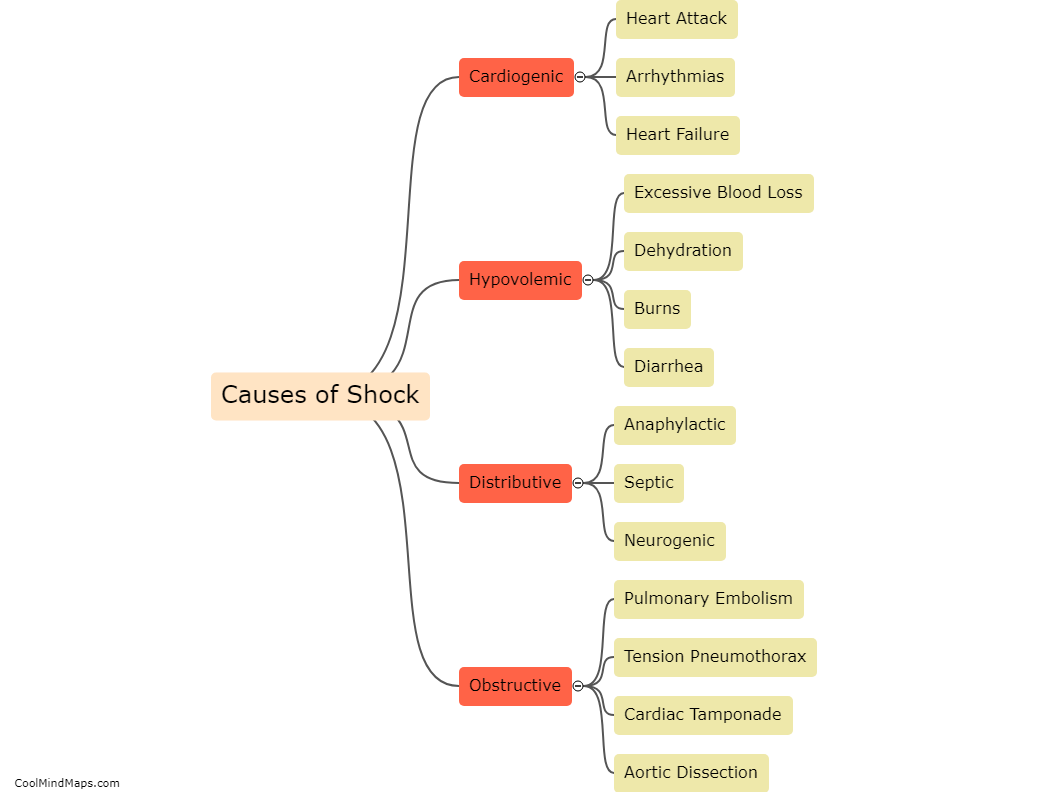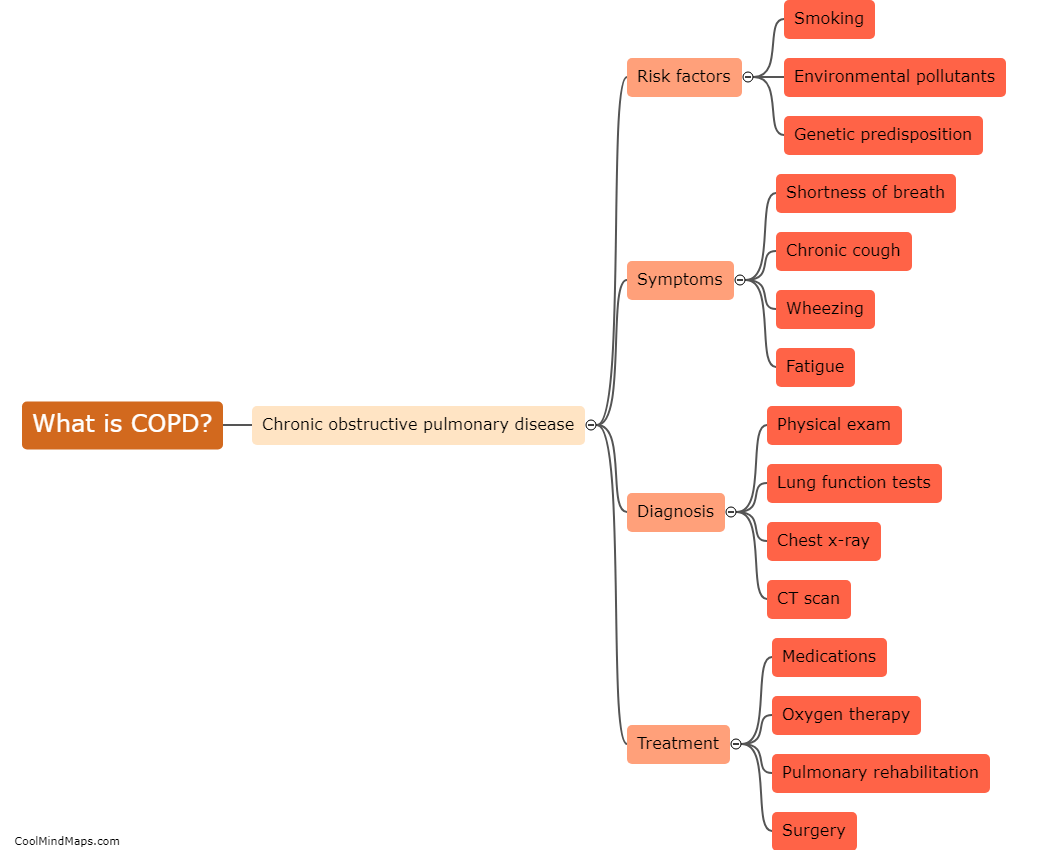How is shock treated?
Shock is a life-threatening condition that requires immediate medical treatment. The primary goal of treating shock is to restore blood flow and oxygen supply to the vital organs of the body. Treatment typically begins with identifying and addressing the underlying cause of shock, such as severe bleeding, infection, or heart failure. In most cases, intravenous fluids are administered to increase blood volume and improve circulation. Medications, such as vasopressors, might also be given to constrict blood vessels and raise blood pressure. Additionally, oxygen therapy, pain relief, and measures to maintain body temperature may be implemented. Close monitoring and continuous medical intervention are crucial during the management of shock to prevent further complications and promote recovery.

This mind map was published on 19 July 2023 and has been viewed 109 times.











